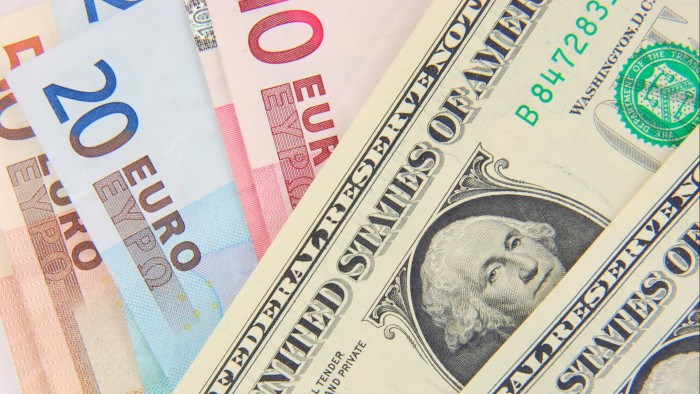Unlock the Editor’s Digest for free
Roula Khalaf, Editor of the FT, selects her favourite stories in this weekly newsletter.
The writer is professor of economics at London Business School and vice-president of the Centre for Economic Policy Research
The policy unpredictability of the Trump administration has accelerated questioning of the long-term viability of the dollar’s hegemonic status. This will have significant implications for the euro, the second most traded currency globally. More demand for the euro will bring benefits to Europe but also risks which need to be addressed.
Firstly though, two distinct concepts are often conflated when analysing the dollar: its role as the world’s dominant international currency and its exchange rate. In fact, these are different economic phenomena. The dollar has served as the global reserve currency since at least 1944, but its relative strength has fluctuated significantly since the adoption of floating exchange rates in 1973 — hardly evidence of a structurally overvalued currency.
Equally persistent is the misunderstanding that the international role of the dollar requires the US to run sustained current account deficits. In reality, global dollar liquidity is supported by the vast stock of US Treasuries and other safe-dollar assets held across the world. When foreign investors hold US Treasuries, they are recorded as gross external liabilities of the US but they are not necessarily linked to net financial flows captured in the current account.
To illustrate: if foreign central banks and institutions buy large volumes of US bonds, while US investors acquire foreign equities or foreign direct investment, the current account may remain balanced — or even in surplus. Furthermore, the existence of Eurodollars—dollar-denominated liabilities issued by non-US entities — adds another layer of complexity. These instruments increase global dollar liquidity without any link to the US current account.
What is clear, however, is that the US functions as a de facto world banker. It holds long positions in risky foreign assets and issues safe assets demanded by the rest of the world. This asymmetry yields an excess return on the US net foreign asset position — the famous “exorbitant privilege”. This privilege averages an estimated 1.5 percentage points annually in real terms since the 1950s and enhances the sustainability of US external debt.
US Treasuries also benefit from a distinct “convenience yield” — the premium investors are willing to pay for holding a highly liquid and safe asset. In times of stress, global investors turn to Treasuries, lowering borrowing costs for the US government and reinforcing its external balance sheet. This flight is often self-fulfilling: if investors expect others to seek refuge in dollar assets, they are incentivised to do the same.
For central banks, this dynamic is crucial. The appreciation of the dollar and the rise in US bond prices during periods of turbulence enhance the value of dollar reserves. These reserves can then be deployed to stabilise banking systems or defend currencies in distress.
Yet this privilege is not immutable. Over time, both the exorbitant privilege and the convenience yield have shown signs of erosion, mirroring the relative decline of the US in the global economy. In the current landscape, the euro is the only credible alternative to the dollar. A growing international role for the euro could allow the Eurozone to capture a portion of the exorbitant privilege and convenience yield, thereby lowering the cost of capital for European firms and governments.
However, greater internationalisation of the euro requires a more resilient euro-area financial system. In the future, the Federal Reserve’s “dollar swap lines” that enable central banks to borrow dollars in exchange for their own currencies may not be guaranteed in times of stress. Thus the euro area must be better prepared.
In the short run, this may mean precautionary accumulation of dollar reserves, enhanced co-ordination among central banks, and a concerted effort to reduce the banking system’s exposure to dollar liquidity risk. The functioning of foreign exchange derivative markets should also be scrutinised to increase resilience during systemic shocks. Importantly, payment systems in the euro area should be fully independent of the dollar.
While the Eurozone still grapples with capital market fragmentation and the absence of fiscal union, it benefits from powerful tools. Macroprudential policies can be deployed to manage more volatile capital flows. The EU’s strong legal institutions and the European Central Bank’s undisputed independence provide essential credibility. The international order is shifting and Europe must act to strengthen its financial architecture. Doing so is not just of economic efficiency — it is a prerequisite for monetary sovereignty and long-term global relevance.
